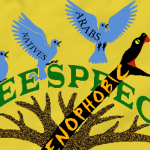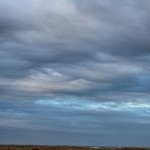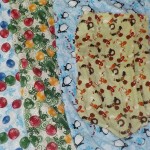For the duration of this article and others by me (Rua Lupa) I’ll refer to the Hemispheres, Solstices, Equinoxes, and Cross Quarters by the Ehoah associated names for two reasons, 1) It is what I am familiar with and 2) It takes a lot less words, so it summarizes nicely.
|
Legend of Ehoah Phrases Borealis (Northern Hemisphere), Australis (Southern Hemisphere), Equilux (‘Equal Light’ – Vernal Equinox) Translux (‘Transition to Light’ – midway vernal equinox and summer solstice) Lux (‘Light/Day’ – Summer Solstice), Transequinox (‘Transition to Equal Dark’ – midway summer solstice and autumnal equinox) Equinox (‘Equal Dark’ – Autumnal Equinox) Transnox (‘Transition to Dark’ – midway autumnal equinox and winter solstice) Nox (‘Dark/Night’ – Winter Solstice) Transequilux (‘Transition to Equal Light’ – midway winter solstice and vernal equinox) |
What is Seasonally Occurring
Right now it is between the solstice and equinox for both hemisphere’s.
For Borealis this is midway Nox and Equilux with noticeably longer days and the coldest time of year nearer the north pole.
In Australis it is midway Lux and Equinox with noticeably longer nights and the hottest time of year nearer the south pole.
Where the majority of earth’s population is (at and north of the Tropic of Cancer with the addition of Southern & Western Europe) the first signs of spring are appearing, usually in the forms of early flowers and returning/nesting birds. Farther North of the Tropic of Cancer and the other regions of Europe, it is the last of winter.
For the Tropics, this is the point in time when the Tropical Rain Belt shifts from its farthest southern point to moving northward. Thus, for the Australis Tropics, it marks the last of the raining season, and the beginning of a rainy season for the equator, where rainy seasons occur.

What Are The Seasonal Customs
In Borealis, most of the temperate climes are having winter carnivals, where almost every community organizes wintry themed activities, such as snow sculpting, ice fishing, ice skating and so on before the snow melts in the following months. For the warmer climes of the northern hemisphere, there is more focus on the coming warmth and light of summer, banishing the dark, cleansing (ritually with fire or through diet or with thorough housecleaning) and celebrating the beginning of spring. Many regions celebrate with brilliant colours, a healthy dose of mischievousness and youthful gaiety in the excitement of spring. As the night still comes early for both climes, there are usually fireworks, bonfires and light displays during or marking the beginning or ending of the festivities.
Northern Hemisphere
|
CELEBRATION |
GENERAL DATE |
SPECIFIC DATE |
CALENDAR |
REGION OF ORIGIN |
CULTURE |
| Patras Carnival | Late January |
17 January until 7th week before first Sunday after the full moon (the Paschal Full Moon) following the northern hemisphere’s vernal equinox. |
Southeast Europe |
Greek |
|
| Sadeh | Late January |
50 days before Northward equinox (~March 21) |
Zoroastrian calendar |
Western Asia |
Persian |
| Tu Bishvat | Early February |
~296 days after the night of a full moon after the vernal equinox |
Western Asia |
Hebrew |
|
| Imbolc | Early February |
1-2 February or nearest full moon to this date or first signs of spring |
North Western Europe |
Celtic |
|
| Transequilux | Early February |
45 days after winter solstice /45 Days before the Vernal Equinox (Dusk of Feb 3 – Midday Feb 4) |
Earth |
Saegoah |
|
| Chūnjié – Chinese New Year | Early February |
When the sun is exactly at the celestial longitude of 315° ending on the 15th day – around February 4 and ends around February 18 (February 19 East Asia time) |
East Asia |
Chinese |
|
| Groundhog Day | Early February |
Feb 2nd
|
Central Europe |
Pennsylvania Dutch |
|
| Lupercalia | Early February |
February 13 through 15 |
Southern Europe |
Roman |
|
| Maslenitsa | Late February |
last week before the 7th week before first Sunday after the full moon (the Paschal Full Moon) following the northern hemisphere’s vernal equinox |
Eastern Europe |
Eastern Slavic |
Southern Hemisphere
|
CELEBRATION |
GENERAL DATE |
SPECIFIC DATE |
CALENDAR |
REGION OF ORIGIN |
CULTURE |
| Lammas Lughnasadh | Early February |
February 1st |
North Western Europe |
Celtic |
|
| Transequinox | Early February |
45 days after summer solstice / 45 days before autumnal equinox (Dawn of Feb 3 – Midnight) |
Earth |
Saegoah |
Most of the celebrations described on this time of year reflects the northern hemisphere’s side of things as information on celebrations elsewhere are difficult to come by. Anyone with information on seasonal festivities for the equatorial region and the southern hemisphere please comment below so that these regions become better represented.












